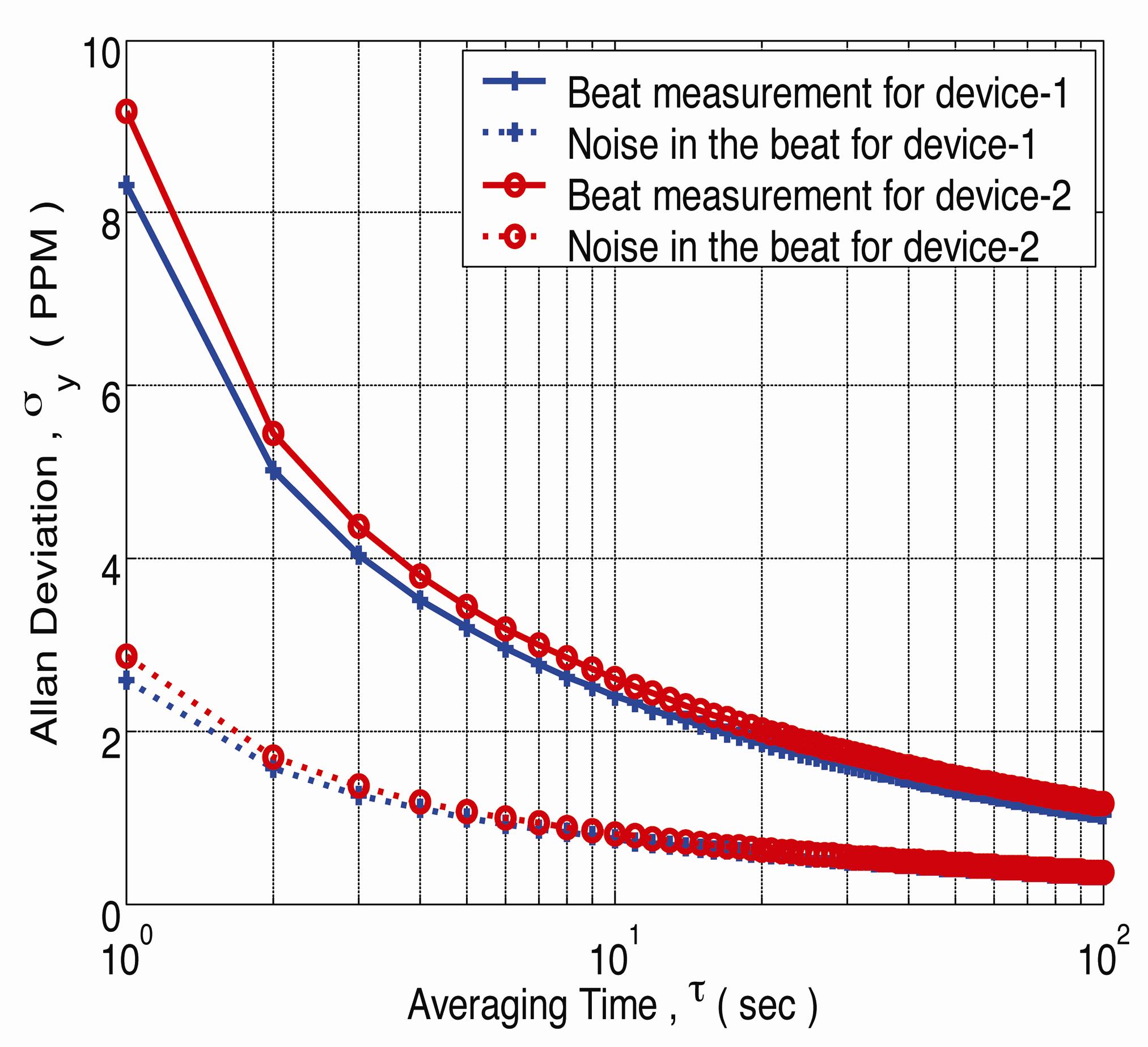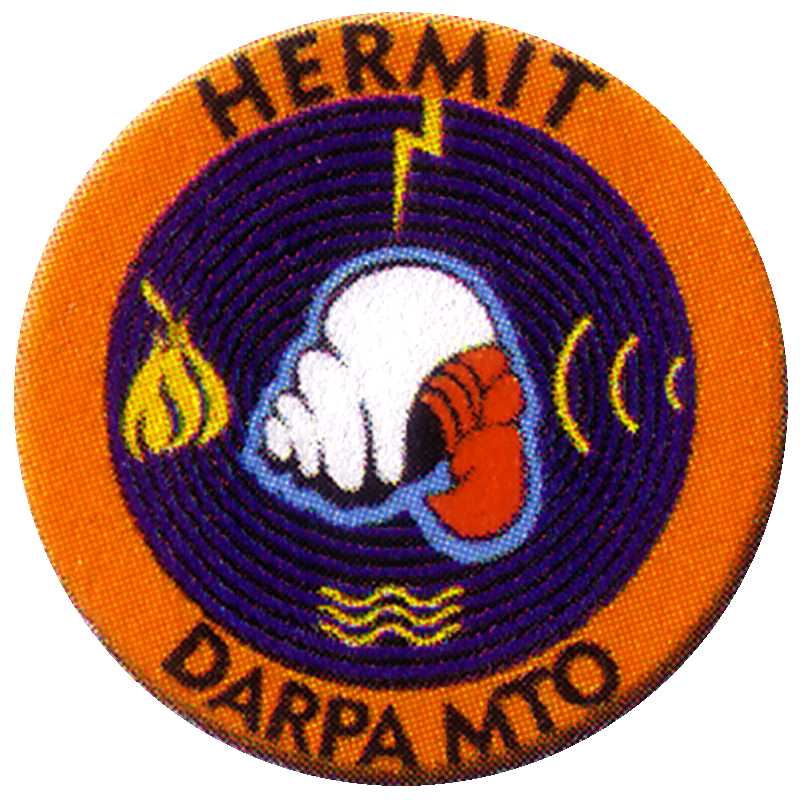 |
|
Figure 1 -
Dual-resonator with composite beams of Si and SiO2.
The thickness of thermally grown SiO2 coating is
approximately 0.33 μm. The cross-section of the beams is
designed to achieve two different temperature coefficients of
frequency (TCf) for the two resonators, while keeping the two
frequencies close together. |
|

(a) (b) |
|
Figure 2 - (a) SEM view of the composite Si resonator
beam with thermally grown SiO2 coating (b) Enlarged
view of the oxide coated resonator beam. |
|
 |
|
Figure 3 -
Schematic of technique for generating the beat frequency from a
dual-resoantor. |
|

|
|
Figure 4 -
Temperature dependence of f1 and f2 of
dual-resonator. |
|
 |
|
Figure 5 -
Comparison of the temperature dependence of the beat frequency
with that of the dual-resonator frequencies. |
 |
|
Figure 6 -
Temperature dependence of fbeat for various designs
having resonator frequencies in the range of 1.0MHz, 1.5MHz and
2.5MHz. |
 |
|
Figure 7 - Resonator
f-T characteristic in rapid-temperature cycling (slew rate ~ 6°C
/min) using (a) an external temperature sensor – Pt. RTD (b)
beat frequency as a temperature sensor. |
 |
|
Figure 8 -
Time-history plot of the beat frequencies (correlation
coefficient ~ 0.9) from the two different devices at constant
temperature (TCf of fbeat ~ -360 ppm/°C). |
 |
|
Figure 9 - Evaluation of the Allan deviation of the
measured beat frequency data and its noise. We
find that the resolution of the beat-frequency thermometer is
0.008 °C for a one-second measurement and as low as 0.0023 °C
for a ten-second measurement. |
| |
|
The beat-frequency
thermometer is probably the best temperature sensing technique for
temperature compensation or temperature control of a MEMS-based
reference oscillator. This technique eliminates the effect of
thermal lag and static temperature gradients as the temperature
signal comes directly from the resonator, and it provides a method
that does not rely on analog signal processing, which might bring in
added temperature coefficients. It is also important to point out
that this device is a potentially interesting CMOS-Compatible
digital thermometer for ordinary circuit applications. By using the
compensated resonator to count the beat-frequency, the temperature
can be determined to milli-degree accuracy, which makes this device
competitive with the best CMOS thermometers available today.
|
Supported by the DARPA HERMIT Program |
 |
|










